Dandasana, commonly known as Staff Pose, may seem deceptively simple at first sight. This foundational sitting position serves as the foundation for many other yoga asanas, promoting a sense of grounding and stability in the body.
Though the pose appears simple, Dandasana requires precise alignment and encourages practitioners to develop their posture and acquire a profound awareness of their breath.
The Meaning of Dandasana:
The Sanskrit word “danda” means “staff” or “stick,” representing the pose’s emphasis on a long and erect spine. “Asana” means posture or seat. As a result, Dandasana reflects the image of a powerful, steadfast staff, reflecting the optimal alignment of the vertebral column.
Physical Benefits of Dandasana:
- Staff Pose improves posture by strengthening the muscles of the back, belly, and pelvic floor, facilitating optimal spinal alignment.
- Regular practice of Dandasana lengthens and stretches the hamstrings, calves, and lower back, increasing general flexibility in the legs and spine.
- Staff Pose increases digestion by compressing the abdominal organs, which assists in the relief of digestive disorders such as constipation.
- Dandasana helps reduce sciatica symptoms by extending the hamstrings and reducing stress in the lower back.
- Improves Concentration: The focused attention necessary to maintain good posture in Dandasana contributes to increased concentration and mental clarity.
Energetic and Mental Benefits:
- Grounding: The tight attachment of the sitting bones to the earth in Staff Pose promotes stability and grounding, which helps to relax the mind and lessen worry.
- Balances Energy Flow: Dandasana promotes the free flow of energy (prana) throughout the body, balancing the energy centers (chakras) and improving general health.
- Dandasana promotes relaxation by requiring effort to sustain the position while simultaneously encouraging a sense of calm and inner peace via steady breathing and focused awareness.
- Cultivates Discipline: Regular Dandasana practice helps practitioners develop discipline and self-awareness as they learn to find comfort and ease in the pose’s stillness.
A Step-By-Step Guide.
While Staff Pose seems simple, proper posture is required to get the full benefits and minimize strain. Here’s a step-by-step instruction to practicing Staff Pose safely and effectively:
- Begin by sitting on the floor, your legs straight out in front of you. If sitting on the floor causes soreness in your hamstrings, lift your hips by resting on a folded blanket or yoga bolster.
- Bring your feet together, connecting your big toes but slightly separating your heels. Flex your ankles by pointing your toes back at you, activating the muscles in your shins and feet.
- Place your palms flat on the floor next to your hips, fingers pointing forward. Keep your shoulders relaxed and away from your ears.
- Draw your navel inside and towards your spine to engage your core. Maintain a natural bend in your lower back and avoid arching your spine too much.
- To lengthen your spine, press your sitting bones firmly into the floor. Imagine your crown of the head stretching towards the ceiling. Maintain the sensation of length across your whole spine.
- Take deep, steady breaths throughout the position. Inhale to stretch your spine, and exhale to relieve tension.
- Hold the stance for as long as you feel comfortable. For novices, 30 seconds to 1 minute is an excellent beginning point. With practice, you may steadily extend the holding time.
- To exit the posture, slowly release your hands and slide down on your back, one vertebra at a time. Rest in Child’s stance (Balasana) for a few breaths to counteract the stance and enable your body to absorb its benefits.
Exploring Variations of Dandasana:
Dandasana can be adapted to suit various levels of flexibility and body types. Here are a few options to consider:
Dandasana with a Bolster:
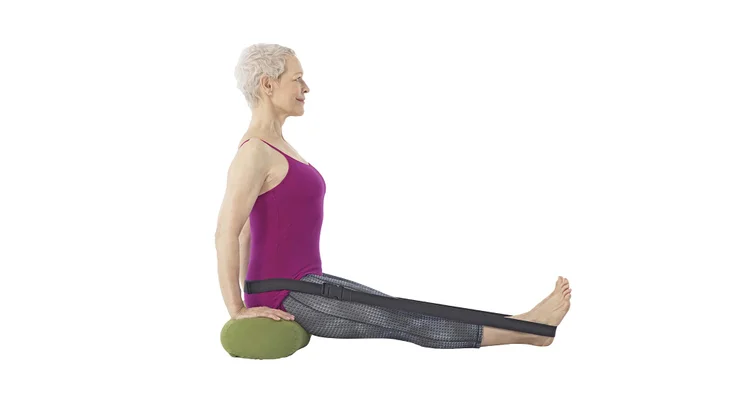
If your hamstrings are so tight that you can’t sit comfortably with your legs completely extended, use a folded yoga blanket or bolster. This lifts your hips and decreases the stress on your hamstring.
Dandasana against a Wall:
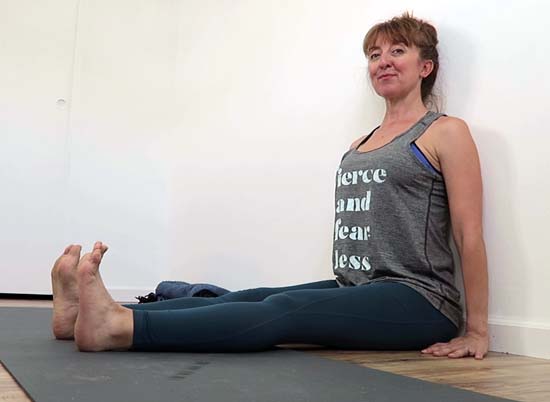
If keeping perfect spinal alignment is difficult, sit with your back against a wall for support. This helps to maintain a neutral spine and allows you to concentrate on activating your core and stretching your neck.
Precautions and Contraindications:
Staff Pose has many advantages, but may not be suited for everyone. Individuals with the following conditions should use caution or avoid the posture entirely:
- Lower Back Injury: Those with acute or chronic lower back discomfort should proceed with caution and may need to modify or avoid Dandasana entirely.
Individuals with hamstring issues should refrain from straining their legs into extension in Dandasana and instead focus on moderate stretching and rehabilitation. - Pregnancy: Pregnant women should avoid deep forward bends like Dandasana, especially in the later stages of pregnancy, to avoid strain on the abdomen and pelvic region.
- High Blood Pressure: People with uncontrolled high blood pressure should avoid holding their breath in Dandasana and instead practice conscious, steady breathing.
Conclusion:
Staff Pose is a fundamental yoga pose that provides several physical, mental, and energy advantages. In this basic posture, practitioners develop strength, flexibility, and awareness, laying the platform for further study of the broad realm of yoga.
Dandasana, whether performed alone or as part of a sequence, encourages us to embody the qualities of steadiness, presence, and inner calm both on and off the mat.
Frequently Asked Question
What is the name of Dandasana?
Dandasana is frequently referred to as “Staff Pose” in English. In Sanskrit, “Danda” means “staff” or “rod,” hence the name Dandasana, which translates to “Staff Pose.”
what are the benefits of Dandasana?
Key advantages of practicing Staff Pose include improving posture, increasing flexibility, strengthening core muscles, stimulating digestion, relieving sciatica, calming the mind, improving concentration, promoting grounding and stability, balancing energy flow, and cultivating mindfulness. It is essential to approach each practice with patience, curiosity, and an open heart, allowing yourself to explore the pose at your own pace. Incorporating Dandasana into your regular yoga practice can help you build strength, flexibility, and mindfulness while promoting overall health and well-being.
What is the duration of Dandasana?
Staff Pose, a yoga pose, can be held for 30 seconds to several minutes, depending on personal preference, physical ability, and the context of the practice. Beginners should hold it for 30 seconds to 1 minute, gradually increasing it to 2-5 minutes or longer as they become more comfortable. It’s crucial to listen to your body and honor its limits, and if you feel discomfort or strain, release the pose. Focusing on alignment, breathing, and mindfulness is more important than holding the pose for a specific duration. Integrating Dandasana into a well-rounded yoga sequence can maximize its benefits.
What are the disadvantages of Dandasana?
Dandasana, a staff pose, offers numerous benefits but may also have potential disadvantages, especially for those with specific health conditions or limitations. These include strain on the lower back, increased risk of injury, limited accessibility, discomfort in the hips or knees, and wrist discomfort. Props like cushions or blankets can help support the hips and wrists, while yoga blocks or cushioning can alleviate wrist discomfort. Dandasana is not suitable for pregnant women, as it can compress the abdomen and restrict blood flow to the uterus. To avoid these risks, it is essential to approach the pose with awareness, mindfulness, and respect for one’s unique needs and limitations. Consulting with a qualified yoga instructor or healthcare provider is recommended for safe yoga practices during pregnancy.

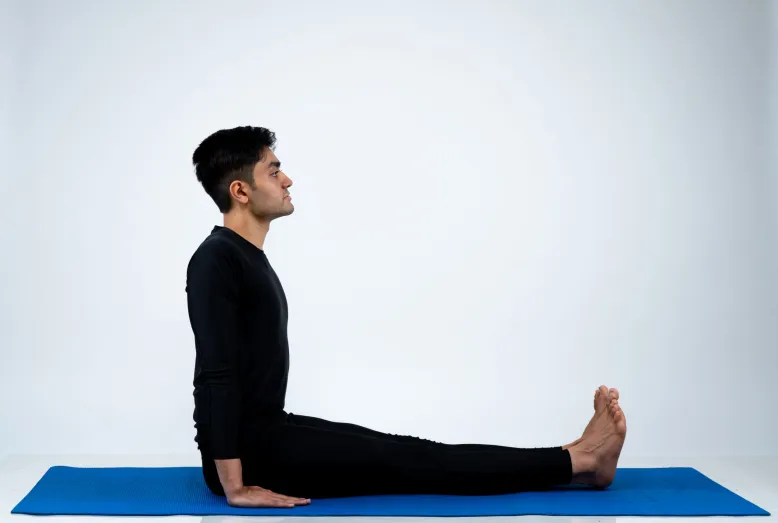
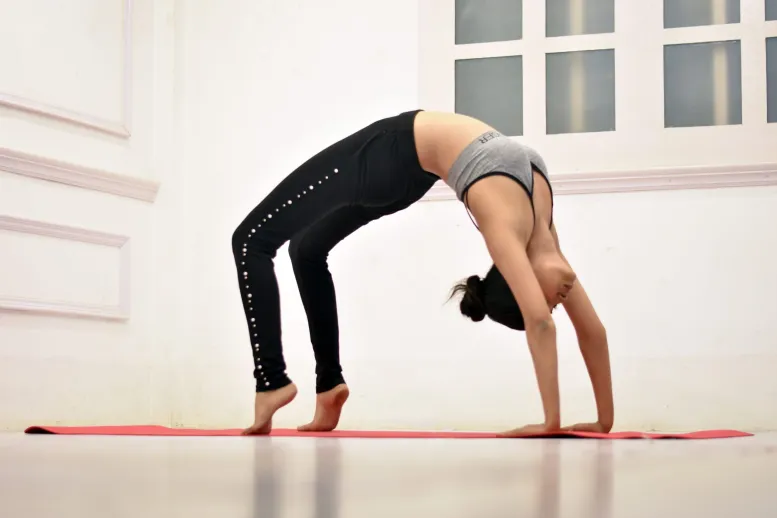
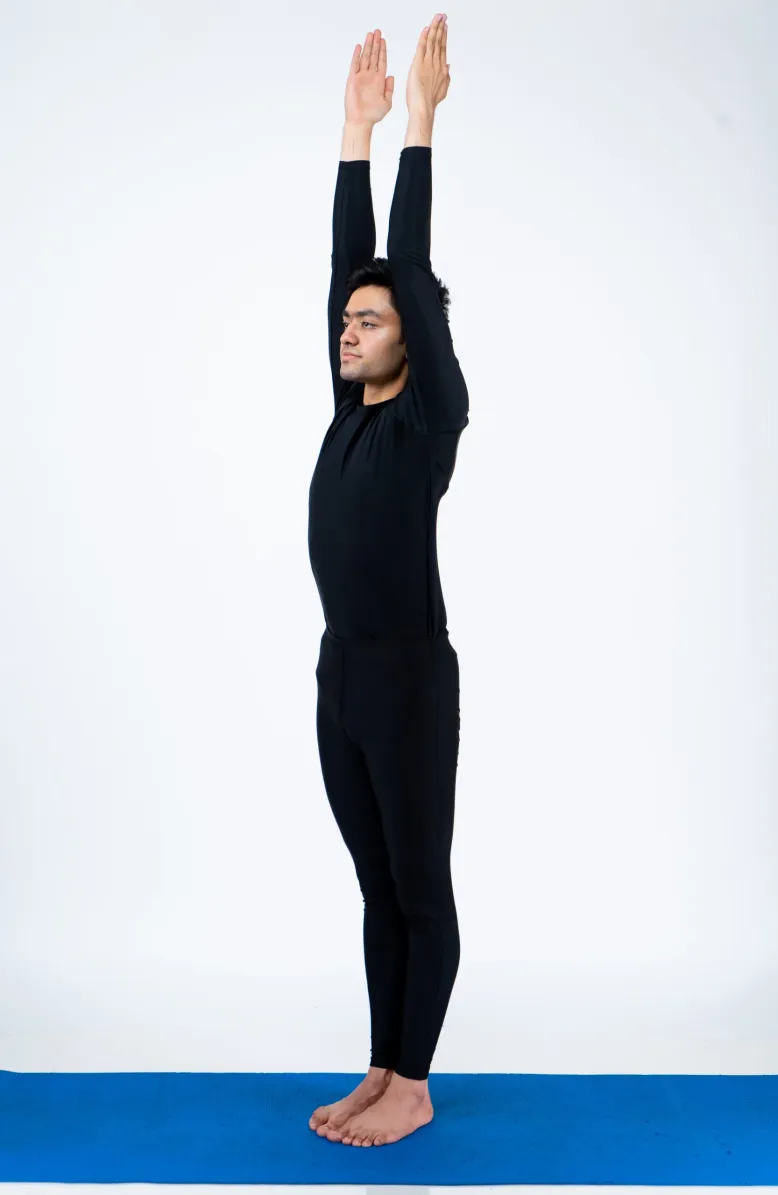
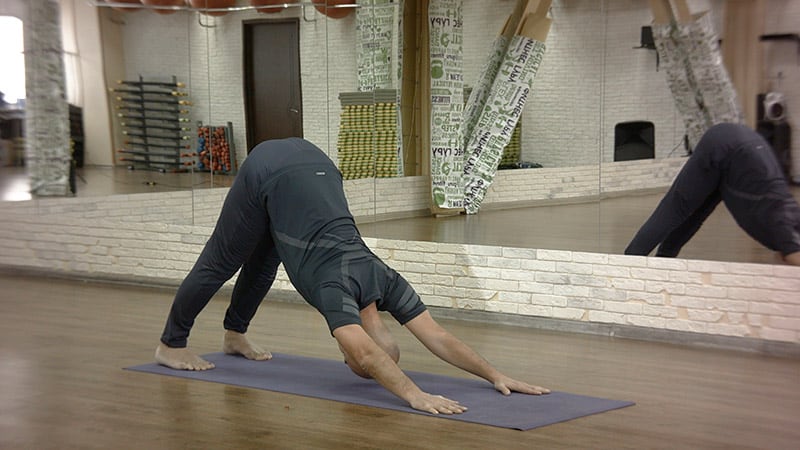
No Comments